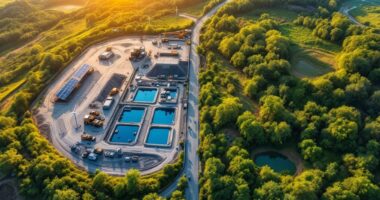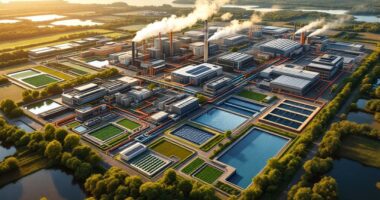Environmental justice tackles how pollution and environmental hazards disproportionately affect disadvantaged communities. Emerging in the 1980s, it encompasses fair treatment and meaningful involvement of all people in environmental decisions. Core principles include respecting Mother Earth and ensuring equal protection from environmental threats. Examples range from higher pollution levels in low-income neighborhoods to unequal disaster recovery resources. This movement continues evolving, now embracing climate justice and global perspectives in its quest for systemic change.

While clean air and pristine landscapes may seem like a universal right, the harsh reality is that environmental benefits and burdens are not distributed equally across society. Environmental justice, a concept that emerged in the 1980s at the intersection of environmentalism and social justice, addresses this imbalance by advocating for fair treatment and meaningful involvement of all people in environmental decisions, regardless of race, color, or income.
Imagine environmental justice as society’s ecological conscience—a framework ensuring that no community becomes a dumping ground for hazards while others enjoy pristine parks and clean water. The movement didn’t appear out of thin air; it grew from the civil rights movement when activists noticed toxic facilities had an uncanny knack for showing up in minority neighborhoods. Talk about an unwelcome housewarming gift! Dr. Robert Bullard’s groundbreaking 1982 study provided crucial evidence by documenting that majority Black neighborhoods housed most of Houston’s waste facilities.
The 17 Principles of Environmental Justice, adopted at the 1991 National People of Color Environmental Leadership Summit, form the backbone of this movement. These principles affirm the sacredness of Mother Earth, demand policy based on mutual respect, and call for protection from environmental threats for everyone—not just those with fancy zip codes and political connections. These principles emphasize the importance of environmental education as a means to empower communities to participate in decision-making processes.
Environmental justice isn’t about privileged conservation—it’s ensuring nobody becomes collateral damage in humanity’s ecological footprint.
Real-world examples of environmental injustice are unfortunately abundant. Low-income neighborhoods often feature more air pollution than a Victorian London fog scene. Rural and indigenous communities struggle for clean water access while elsewhere, sparkling fountains flow freely. After natural disasters, recovery resources seem to follow socioeconomic maps with disturbing precision. Environmental justice aligns with broader human rights principles by recognizing that everyone deserves equal environmental protection regardless of socioeconomic status.
Government response has evolved since President Clinton signed Executive Order 12898 in 1994. The EPA now defines environmental justice as both fair treatment and meaningful involvement—think of it as not just getting a seat at the table but having an actual voice in the conversation.
Challenges persist, from proving cumulative impacts (the environmental equivalent of death by a thousand cuts) to addressing environmental gentrification—where well-intentioned green improvements ironically price out the very communities they’re supposed to help.
The environmental justice movement continues to expand, increasingly incorporating climate justice and global perspectives into its evolving framework.
Frequently Asked Questions
How Do Individuals Pursue Environmental Justice Careers?
Individuals pursue environmental justice careers through multiple pathways. They typically obtain degrees in environmental science, policy, or law, with many positions preferring master’s degrees.
Professionals develop skills in analysis, communication, and regulatory knowledge while pursuing roles like environmental lawyers, sustainability managers, or policy analysts.
Career advancement often involves joining professional organizations, attending conferences, seeking mentorship, and engaging in continuous learning through workshops and specialized certifications in environmental fields.
What Legal Frameworks Protect Environmental Justice Globally?
Environmental justice receives protection through multiple legal frameworks globally.
International treaties like the Paris Agreement and Convention on Biological Diversity create binding obligations. The UN framework, particularly the Sustainable Development Goals, provides structural support.
Regional mechanisms such as EU Environmental Law and the African Charter offer targeted protection. National policies, including the U.S. Executive Order 12898 and India’s National Green Tribunal, establish country-specific safeguards.
Together, these multi-layered frameworks create a patchwork of environmental justice protections worldwide.
How Is Environmental Justice Measured in Communities?
Environmental justice is measured through specialized tools that quantify environmental risks and social vulnerabilities. The Environmental Justice Index (EJI) tracks 36 factors across census tracts, while California’s CalEnviroScreen evaluates 21 indicators of pollution burden and population characteristics.
Community Capacity Theory dimensions—including resources, leadership, and sense of community—provide another measurement framework. Key indicators typically include air and water quality, proximity to hazardous facilities, socioeconomic factors, and health outcomes.
These measurements help identify communities most affected by environmental injustices.
Can Technology Help Advance Environmental Justice Goals?
Technology offers powerful tools for advancing environmental justice goals.
AI-powered data analysis can identify inequalities, while low-cost sensors enable community-led monitoring of pollution.
Digital platforms amplify marginalized voices and increase transparency in decision-making.
Mobile apps let residents report hazards in real time, and GIS mapping visualizes disparities across populations.
These technological innovations help level the playing field by providing communities with evidence to advocate for healthier environments and equitable resource distribution.
How Does Climate Change Exacerbate Environmental Injustice?
Climate change functions as an inequality multiplier, intensifying existing environmental injustices. It disproportionately burdens vulnerable populations—communities of color face 52% higher exposure to poor air quality, while low-income areas lack resources for climate adaptation.
The cruel irony? Those contributing least to emissions (bottom 50% globally produce only 13-15%) suffer most severely. Indigenous communities lose traditional lands, minorities face higher mortality during climate disasters, and systemic barriers prevent these groups from participating in solution-making processes.









